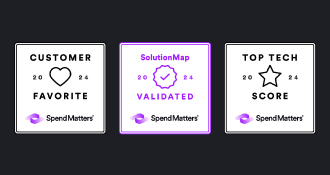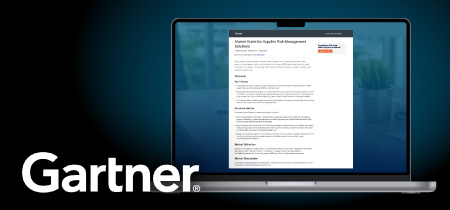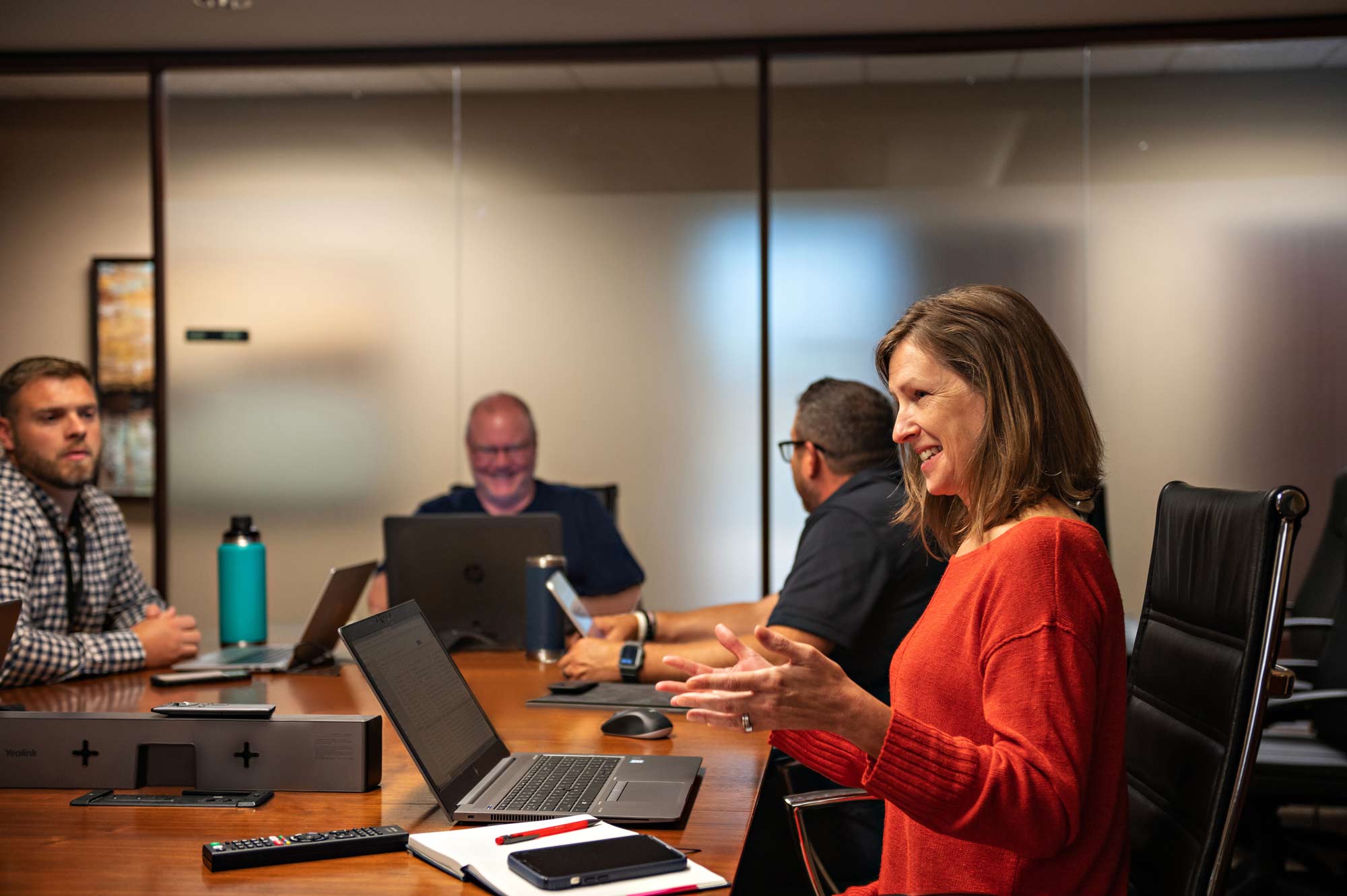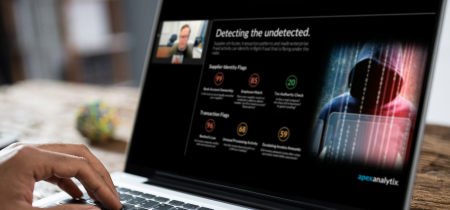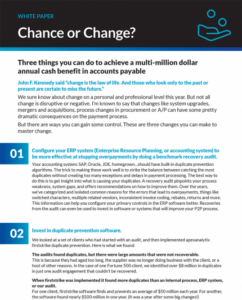
John F. Kennedy said “change is the law of life. And those who look only to the past or present are certain to miss the future.”
We sure know about change on a personal and professional level this year. But not all change is disruptive or negative. I’m known to say that changes like system upgrades, mergers and acquisitions, process changes in procurement or A/P can have some pretty dramatic consequences on the payment process.
But there are ways you can gain some control. These are three changes you can make to master change.
1. Configure your ERP system (Enterprise Resource Planning, or accounting system) to be more effective at stopping overpayments by doing a benchmark recovery audit.
Your accounting system: SAP, Oracle, JDE, homegrown…should have built-in duplicate prevention algorithms. The trick to making these work well is to strike the balance between catching the most duplicates without creating too many exceptions and delays in payment processing. The best way to do this is to get insight into what is causing your duplicates. A recovery audit pinpoints your process weakness, system gaps, and offers recommendations on how to improve them. Over the years, we’ve categorized and isolated common reasons for the errors that lead to overpayments, things like switched characters, multiple related vendors, inconsistent invoice coding, rebates, returns and more. This information can help you configure your primary controls in the ERP software better. Recoveries from the audit can even be used to invest in software or systems that will improve your P2P process.
2. Invest in duplicate prevention software.
We looked at a set of clients who had started with an audit, and then implemented apexanalytix firststrike duplicate prevention. Here is what we found:
The audits found duplicates, but there were large amounts that were not recoverable. This is because they had aged too long, the supplier was no longer doing business with the client, or a host of other reasons. In the case of one Fortune 500 client, we identified over $8 million in duplicates in just one audit engagement that couldn’t be recovered.
When firststrike was implemented it found more duplicates than an internal process, ERP system, or our audit. For one client, firststrike software finds and prevents an average of $50 million each year. For another, the software found nearly $500 million in one year. (It was a year after some big changes!)
Companies who use prevention software save big money on contingency fees. With software that is finding 98% to 99% of duplicates and preventing them, you can direct apexanalytix auditors to their highest value work. The highest value work that our audit teams perform for our clients these days are reviews to identify missing, hidden, or unapplied credits on vendor statements. We have special teams with specific skills in analysis, supplier communications, and accounting to find and recover these credits. Additionally, sales/use tax and contract compliance recovery audits are rapidly emerging high-value audit area and require a different, advanced set of skills and understanding of the entire procure-to-pay process.
3. Get on a regular schedule of audits and duplicate prevention software upgrades.
I’m a broken record when it comes to change and the impact it has on audit findings. I know from experience that as soon as you acquire a company, add an accounting system, change your procurement process, or experience a major market disruption (as we are now with COVID-19), there will be spike in vendor credits, duplicates, rebates, returns, unapplied cash, contract noncompliance, and sales and use tax errors.
On the duplicate prevention front, make sure your software is current. My audit team uses the same software that our clients implement to prevent duplicates. So, our developers get feedback from two user bases: the internal pros who use it to perform the duplicate review, and the analysts at our client companies. We’re always changing to keep up with best practices. And that’s the best kind of change there is.
About the Author
As senior vice president, global field operations, Phil leads our commercial and retail audit teams and our international operations. His focus is on ensuring the highest level of customer satisfaction and value creation, which has helped to fuel a period of double-growth. He was previously responsible for leading our audit and software implementation support teams in the Americas. Prior to joining apexanalytix in 2004, Phil worked with GMAC Insurance, Questcon Technologies and BCE Emergis, where he specialized in quality assurance consulting and management. Phil graduated from the University of North Carolina at Greensboro with a degree in information systems. He also served proudly in the U.S. Army’s 82nd Airborne Division as a Communications Specialist.

